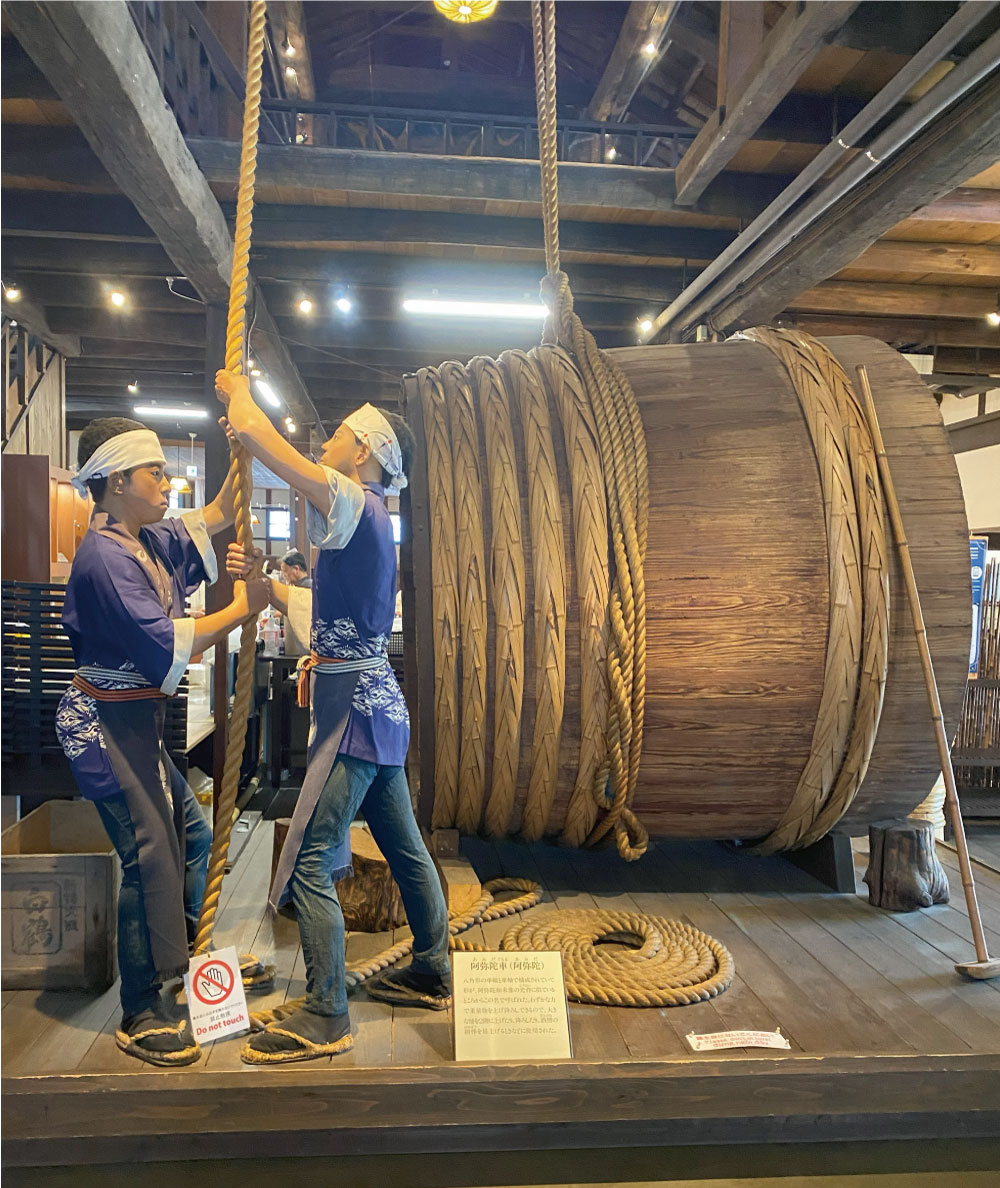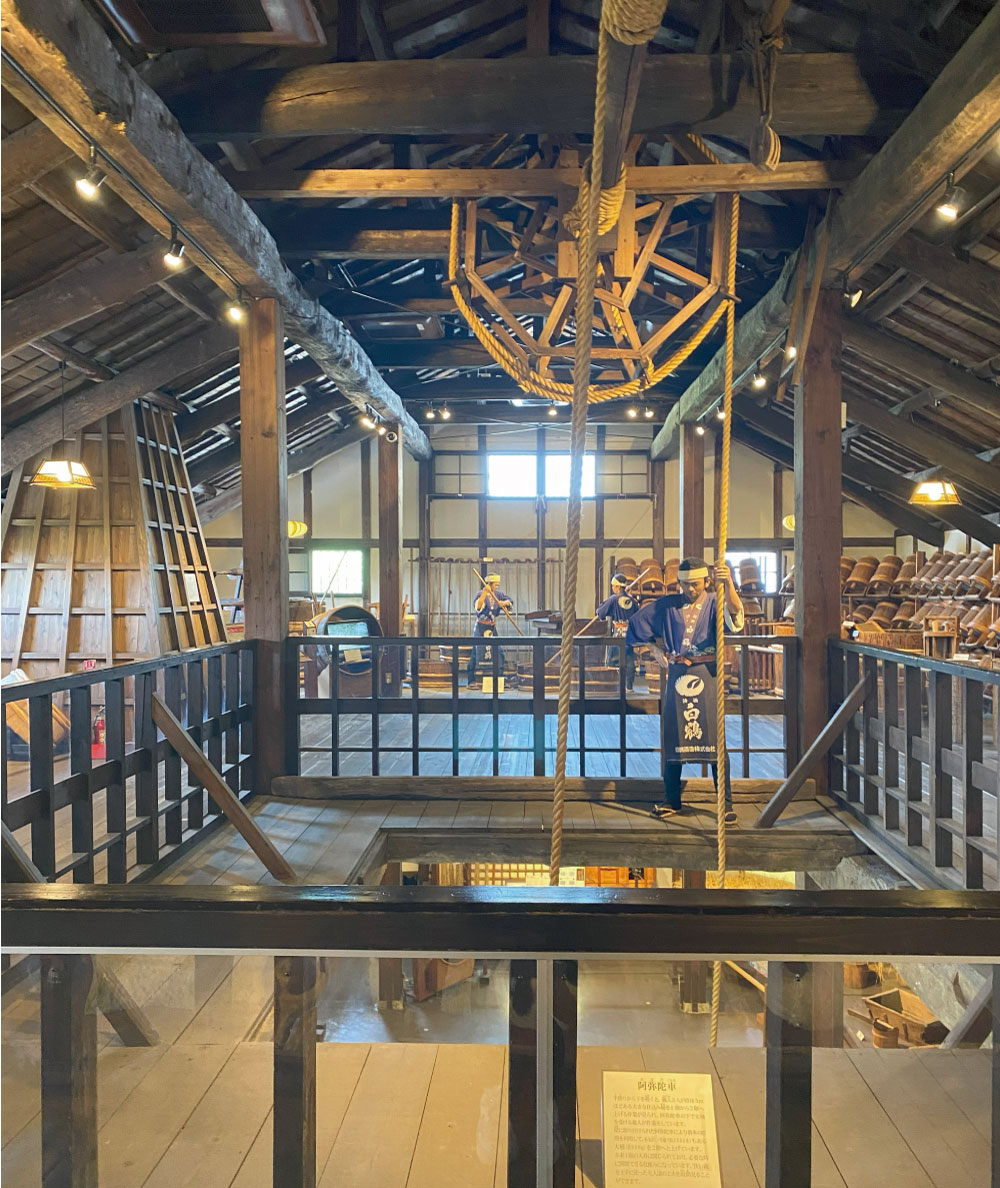Water
Alongside rice, water is one of the most important ingredients. In the Nada region, subterranean water flowing from Mt. Rokko is used to brew sake.
In the past, water was transported here by horse from Nishinomiya, 10 kilometers to the east, in large barrels such as the one on display. Nowadays, water is brought in via pipeline from the foot of Mt. Rokko.
Rice and Rice Steaming
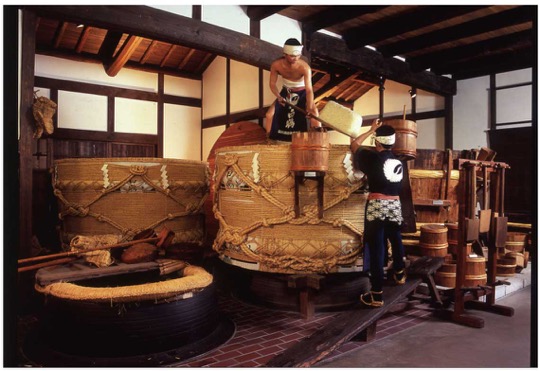
Rice is as important an ingredient as water for brewing sake.
Rice suitable for making sake is officially referred to as shuzo kotekimai (lit. “rice ideal for brewing”), and of this sake rice, Yamada Nishiki harvested in Hyogo Prefecture is the most renowned. Yamada Nishiki grows tall, and the large grains fall easily, making it a difficult variety to cultivate. We often use Yamada Nishiki, but we also use Hakutsuru Nishiki, a close relative of Yamada Nishiki which we developed ourselves. Our sake made using Hakutsuru Nishiki has been garnered a number of gold prizes at the Annual Japan Sake Awards.
To remove the components of rice which cause undesirable flavors in finished sake, the outer hull of the rice grain is polished away. At our brewery, 30% of the kernel is polished away for normal sake. For premium-quality dai ginjo sake, the rice is polished to half or less of its original size.
Washing, Soaking, Steaming
Having been polished, rice was washed with water (senmai) then soaked in water for over 10 hours to absorb it (shinseki).
After that, it was steamed (jomai) using large steaming vats called koshiki.
The steamed rice was then carried to the upper floor to be cooled by the chilly winds blowing down from the mountain.
Tools on Display
1-sho masu (1.5 kg masu)
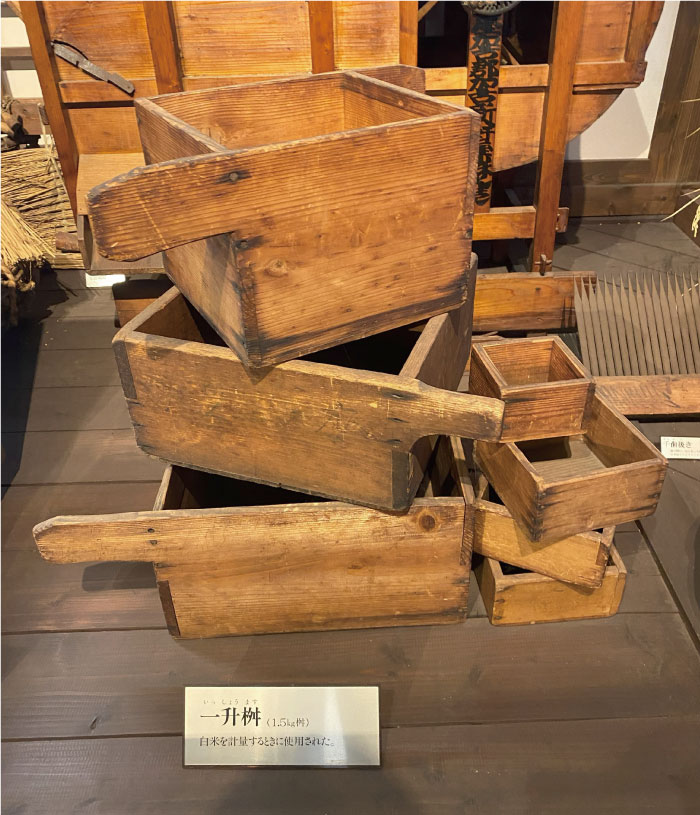
Used to measure white rice.
1-to masu (15kg masu)
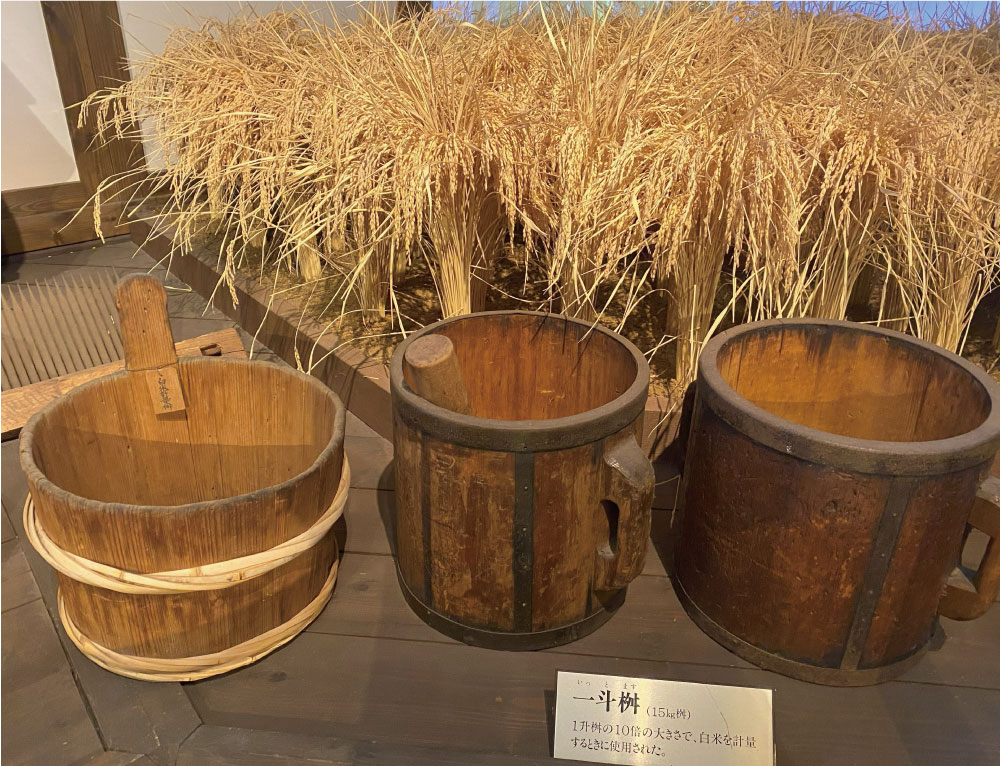
Ten times the size of a 1-sho masu, used to measure white rice.
Taiho (Cannon), approximately 5 koku (about 500 1-sho (1.8 liter) bottles)
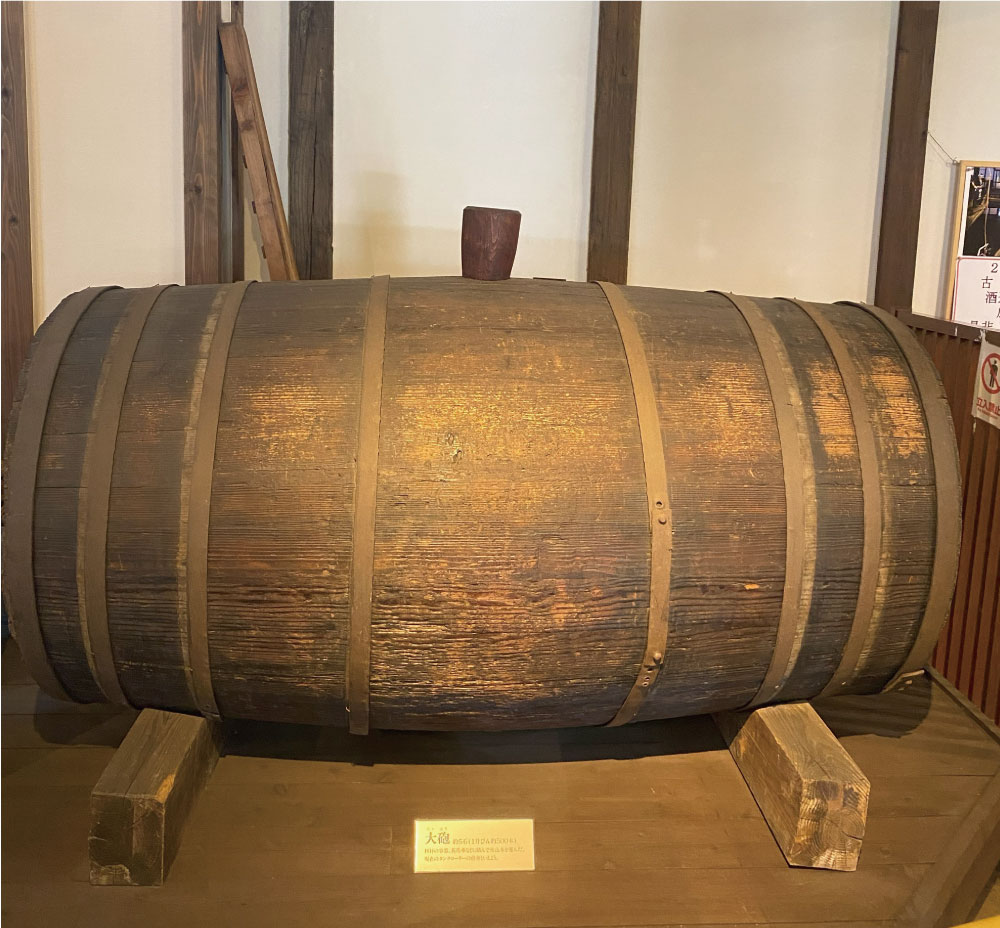
A container made of cedar wood. It was loaded on a wagon or other vehicle to carry water for brewing. It could be considered to be the predecessor to today's tanker truck.
Hasu-oke (Shibu-oke)
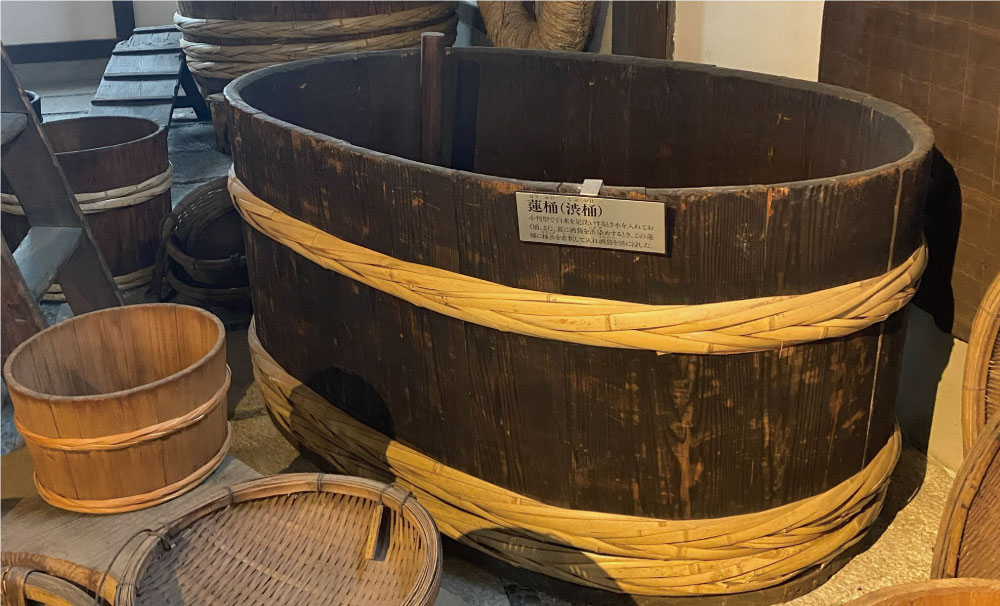
An elliptical tub into which water is poured when washing white rice. Also, when dyeing sake bags in the summer, diluted astringent persimmon juice (kakishibu) would be added to the hasu-oke and the sake bags were soaked in it.
Fumi-oke (Stepping Tub)
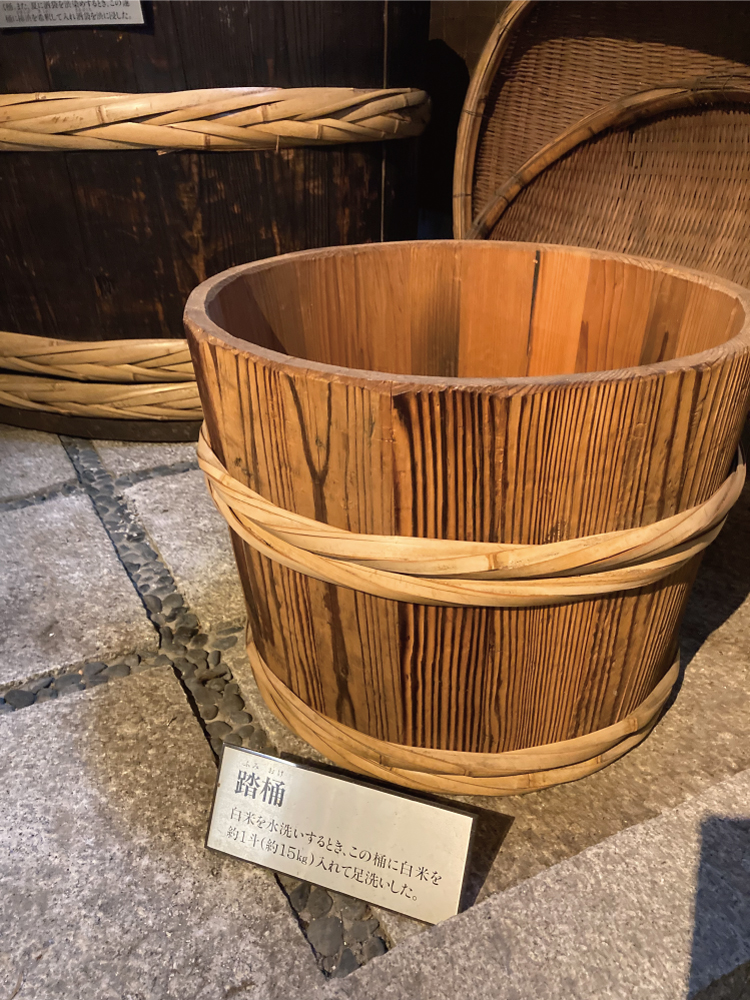
When washing white rice, about 1 to (about 15 kg) of white rice was placed in this tub, and washed using one's feet.
Tsuke-oke (Soaking Tub)
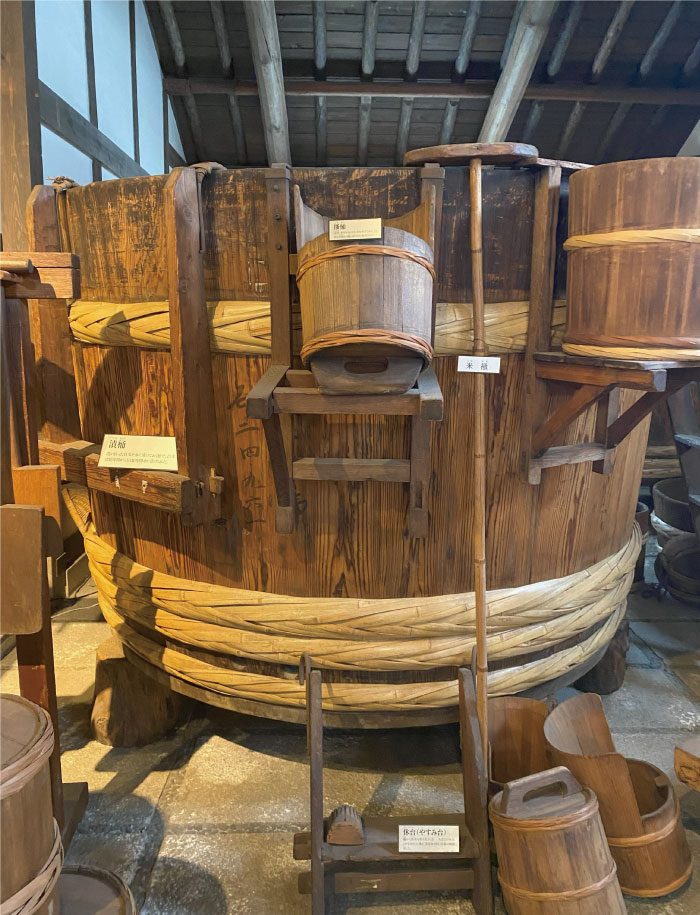
This tub was used to soak the washed white rice in water for several to tens of hours.
Koshiki (Steaming Vat)
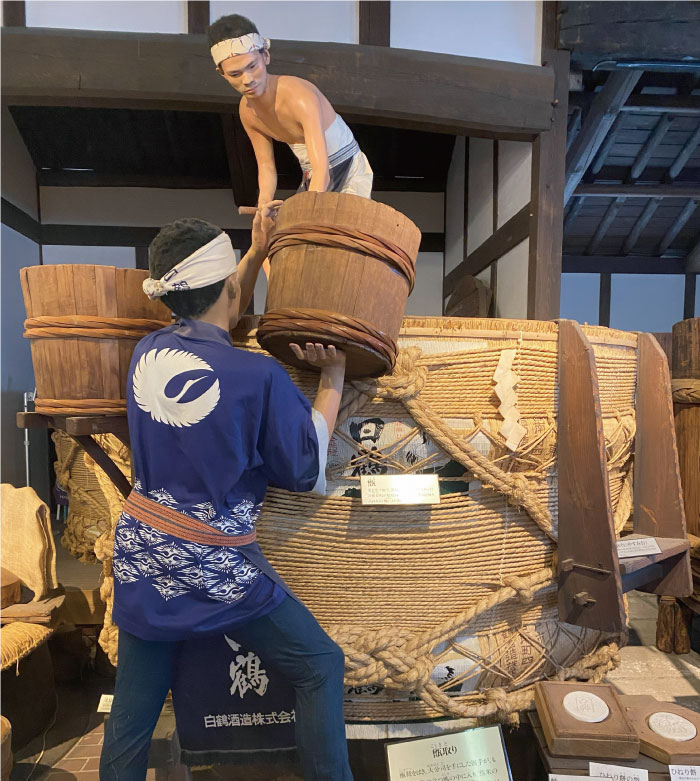
A vat for steaming rice. Straight-grained cedar boards are used to prevent warping due to steam, and there is a hole (koshiki-ana) at the bottom for taking in steam.
Saru (Monkey) (Koma)
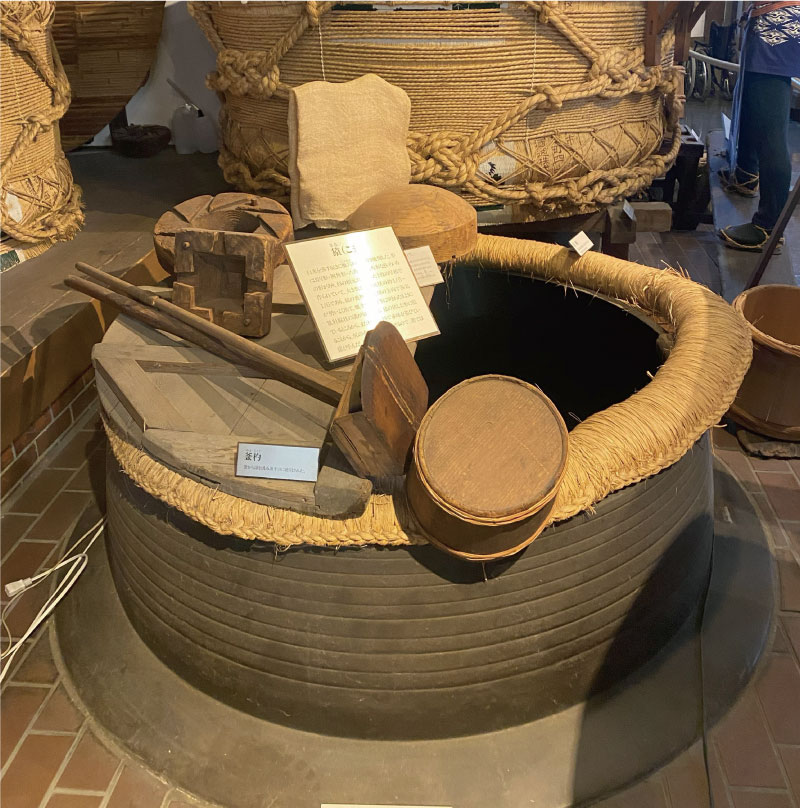
Placed on top of the koshiki-ana when steaming white rice. It comes in various shapes, including circular, square, hexagonal, and octagonal, and is made from a single thick board taken from the base of a cedar tree, about one-fifth to one-sixth the diameter of the base of the steaming vat. Radial grooves are cut into the back of the saru to allow steam to come through with great force in the direction of the arrow, and spread evenly throughout the entire koshiki. It was called a "monkey" in Nada because of its resemblance to a crouching red-bottomed monkey, both in shape and because the cedar material had a reddish color.
Koshiki-dori
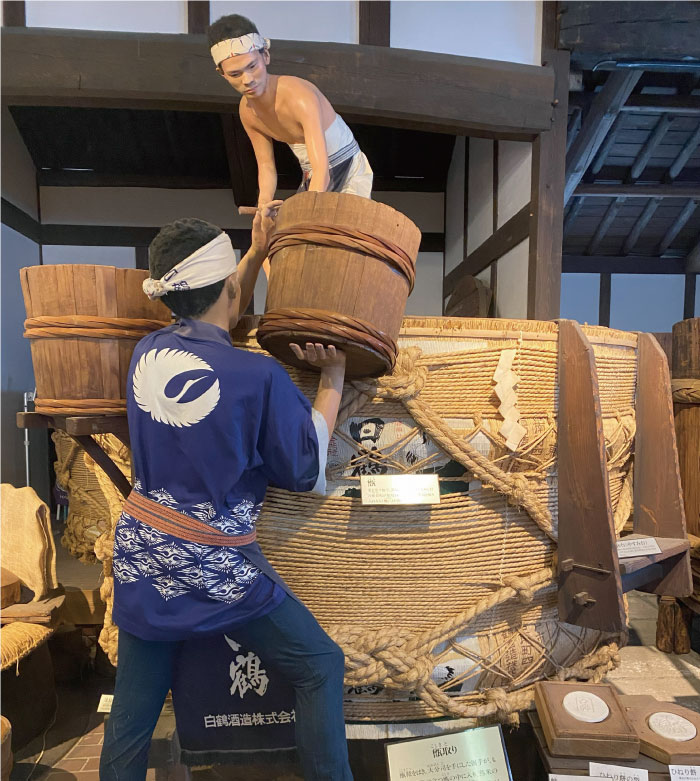
Wearing koshiki shoes, a person holding a large bunji (shovel) enters the steaming vat and begins to scoop out the steamed rice. After taking the steamed rice from the receiver (an assistant role) who has stepped up to the kyuuza (or kyuudai, a special seat), a carrier runs the rice up the steep stairs to the cooling area. From the person scooping to the receiver to the carrier, the lively early morning assembly line work proceeds.
Yagura (Turret)

A turret for releasing steam. On the left side of the entrance on the first floor, there is a replica of the boiler room in which the rice is steamed during the sake brewing process.
A steaming vat is placed on top of the cauldron to steam the rice. Steam vigorously rises from the rice at 100 degrees Celsius. Here, a turret pierces through the ceiling from the first to the second floor in order to release the steam.
Amida-guruma (Amida)
Composed of an octagonal wheel and axle, this gets its name ("Amida wheel") from its resemblance to the halo on statues of Amida Buddha. Because it can lift and lower heavy objects with little force, it was used to raise and lower large tubs to and from the second floor, and to lift the pillar from the sake press.

